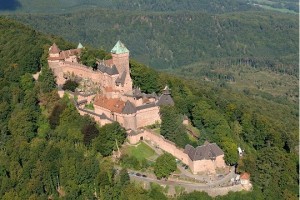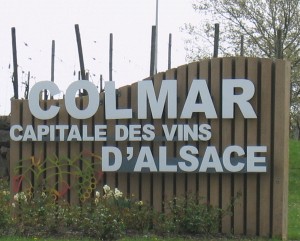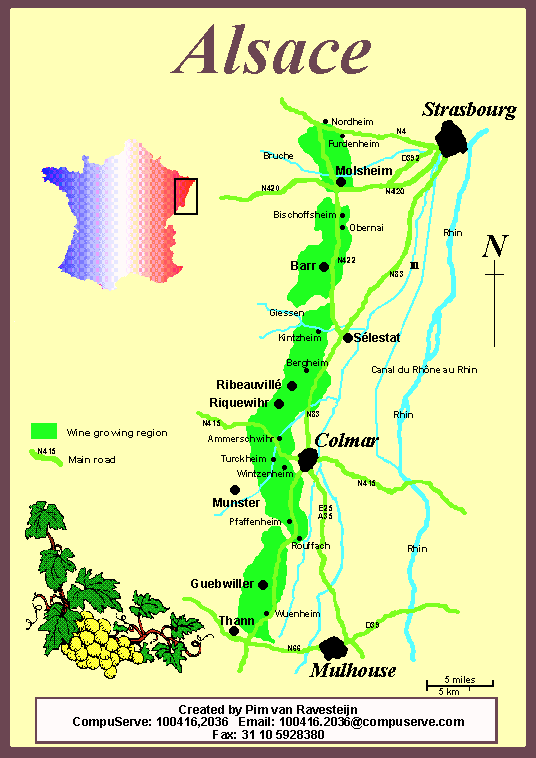Let Terroirs Travels create an intimate tour customized to your needs, or select one of our pre-packaged value tours for small groups . . .
Terroirs Travels will design itineraries, recommend and reserve hotels, restaurants, transportation, English speaking guides, cultural activities, special events and so much more.
We are Your Personal Concierge Abroad!
Highlights of the wine regions of Alsace
France’s Alsace wine region seems a world apart from the rest of France. Alsace sits on the verge of France, with a culture, architecture, and cuisine uniquely its own. Alsace’s wines are also unique. The grape varieties that grow there, for the most part, don’t grow elsewhere in France.
Click here to watch a short video about the Alsace Wine Region
Six unmissable highlights of a visit to Alsace
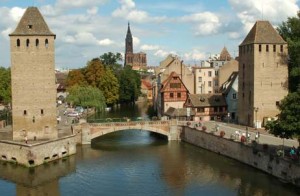 Strasbourg
Strasbourg
• The city of Strasbourg and its historical centre is one of our favourite places in France.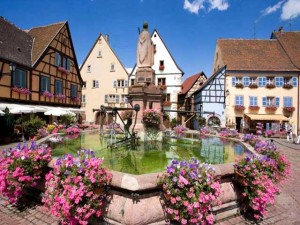
Eguisheim
• Just one of many beautiful villages in Alsace, Eguisheim has numerous traditional half-timbered houses
Chateau Haut-koenigsbourg
• Both the history and setting for Chateau Haut-Koenigsbourg make it one of our top recommendations
Mont Sainte Odile
• The monastery at Mont Saint Odile is one of the most visited pilgrimage sites in France
Colmar
• Museums, historical buildings and colourful medieval houses make Colmar an unmissable town in Alsace

Hunspach
• Hunspach is one of our favourite Alsace villages, in part because of the many well maintained gardens
Alsace’s location and soil
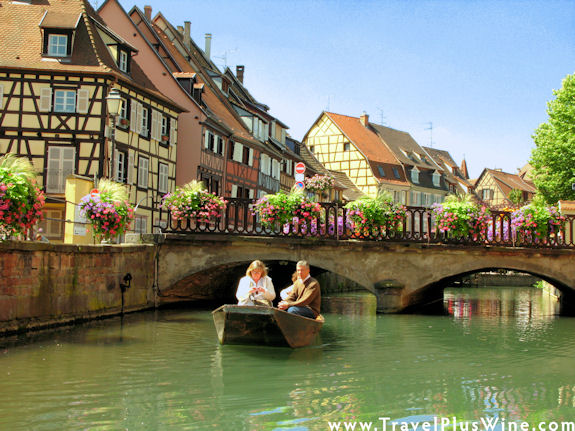 The location of the Alsace region has everything to do with the type of wines the region makes. Alsace’s location also has cultural and historical implications that influence the style of the region’s wines. Alsace is situated in northeastern France, across the Rhine River from Germany. The Alsace region, along with the area northwest of Alsace called Lorraine, was once part of Germany.
The location of the Alsace region has everything to do with the type of wines the region makes. Alsace’s location also has cultural and historical implications that influence the style of the region’s wines. Alsace is situated in northeastern France, across the Rhine River from Germany. The Alsace region, along with the area northwest of Alsace called Lorraine, was once part of Germany.
Today, many of the French who live in Alsace have Germanic names, and the towns have Germanic names, but the region is French. And yet Alsace wines have been shaped by Germany.
Like German wines, they are:
- Predominantly white wines
- Predominantly unblended wines (each made from a single grape variety)
- Usually without oaky flavor
Also, their grape varieties are the same as some of those used in Germany. The winemakers of Alsace have even adopted the German practice of naming their wines according to the grape variety used to make the wine (rather than a location name). Despite these similarities, Alsace wines don’t taste at all like German wines because growing conditions in Alsace are very particular. Primarily Alsace is known for their Riesling, Gewürztraminer, Pinot Gris, Auxerrois Blanc, Pinot Noir, Sylvaner, Pinot Blanc, Muscat varietals and Chasselas wine grapes.
The most important factor in the Alsace landscape is the Vosges (vohj) Mountains, which flank Alsace’s vineyard area on the west. The mountains are important because they block rain from the west. Their foothills also provide slopes that are ideal for vineyards, and a variety of soil types, which creates diversity in the wines.
The climate of Alsace
In terms of climate, the Vosges Mountains cut the Alsace region off from any Atlantic influence by blocking moisture and storms that blow eastward from the ocean. As a result, Alsace enjoys an unusually dry, sunny climate — the driest of any classic French wine region. Because the mountains are lower in the north, and less effective in blocking rain and clouds, the northern part of Alsace tends to be moister and less sunny than the south, although it still has a fairly dry climate.
September and October are the driest months — a particularly fortunate circumstance, because dry autumns enable the growers to leave the grapes ripening on the vine without fear of damaging rains. Thanks to the long, dry growing season, the grapes attain a good level of ripeness on a regular basis. The region’s cool nights assure high levels of refreshing acidity. The combination of ripe fruit flavors and crisp acidity is a trademark of Alsace’s wines.

